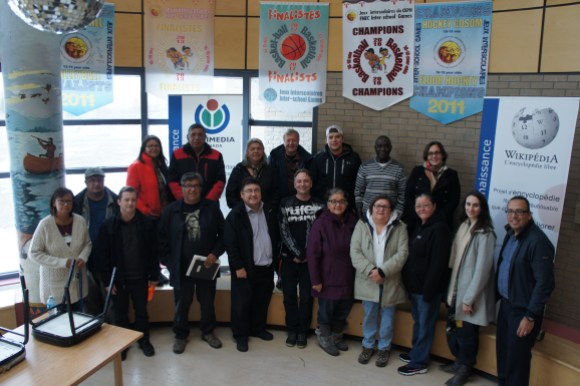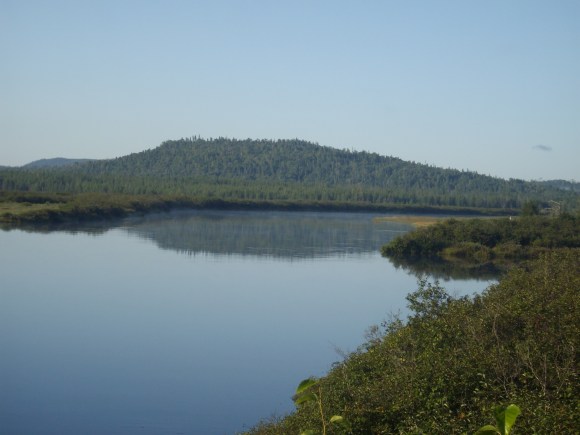
A First Nation in Canada may soon have a Wikipedia to call their own.
The Atikamekw Nehirowisiw Nation, located in central Quebec, is one of the few aboriginal peoples in Canada where virtually the entire population still speaks the language, making it among the most vibrant among the First Nations.
An ongoing project, the first of its kind in Canada, is working with the Atikamekw community to develop Wikipedia content in their own language. The initiative’s goal is to one day have the Atikamekw Wikipedia, currently in the Wikimedia incubator join one of the hundreds of extant Wikipedias.
“It is a way to pass on ancestral knowledge using computers and it allows to preserve traditional practices,” project member Nehirowisiw says. “It is an educational tool for all.”
———
Funded by the Wikimedia Foundation, Atikamekw knowledge, culture and language in Wikimedia projects has several other goals. It is expanding information about the nation on the French Wikipedia; uploading photos, archival documents, and maps to Wikimedia Commons; and is raising awareness among the Wikimedia community about the unique features of indigenous knowledge and languages. The final report will propose recommendations about how to better include indigenous content in Wikimedia projects.
This one-year pilot project (Fall 2016 to Summer 2017) follows a 2013–14 initiative conducted in in Manawan (Québec, Canada) by a linguist from Leipzig University, a high school computer teacher, and an Atikamekw language keeper.
Working together, they created “Wikipetia Project“, an educational project involving students from Otapi secondary school in Manawan to create articles on Wikipedia written in Atikamekw. By the end of this project, the students had created more than 160 articles.
Partners of the current project, “Atikamekw knowledge, culture and language in Wikimedia projects“, include Manawan Otapi secondary school, Conseil Atikamekw de Manawan, Conseil de la Nation Atikamekw (CNA), Wikimedia Canada, Université du Québec en Outaouais (UQO), and the Institut national de la recherche scientifique (INRS, Urbanisation, Culture, Société Research Center) with the collaboration of several members of the Atikamekw community.

The project is divided into three parts: training, pedagogical project and research project. The first includes training sessions with the Atikamekw community given by volunteers from Wikimedia Canada with the goal to make the community autonomous in their work on Wikimedia projects. An initial training took place at the Otapi secondary school in Manawan on October 24, 2016, and another was held with the CNA in La Tuque on November 28, 2016. In May 2017 there will be a session of photographic documentation within the Atikamekw community. The pedagogic project is taking place at the Otapi school from November 2016 to May 2017. In their computer class, students are writing articles in the Wikipetia Atikamekw Nehiromowin.
The research component is intended to document the pilot project with the aim to create a toolkit and a set of recommendations that could be used in other similar initiatives. It builds on discussions with community representatives about the best ways to share traditional knowledge on Wikimedia platforms. The issue of compatibility between free licenses and the principles of ethical research OCAPTM (ownership, control, access and possession), set out by Canadian First Nations, was also addressed during a research seminar. Representatives from the First Nations Information Governance Center and the Quebec National Archives and Library joined the discussion. This conversation will help to better understand the conditions that facilitate the creation of Native content in Wikipedia and other Wikimedia projects, and to raise awareness among the wikimedia community about the specificities of indigenous knowledge.
The project will conclude with a panel at the Wikimania Montréal conference in August 2017. A longer-term goal is to replicate similar projects with other Canadian Aboriginal communities, or elsewhere in the world, and broadly share this experience with the international Wikimedia movement.
———
On the technical side, members of the community are working with the Institut linguistique Atikamekw (ILA) and techno-linguists of the Nation are working to create new words and to standardize the language to create an Atikamekw version of the MediaWiki interface.
For example, they need to invent new terms to translate “homepage”, “free license,” or “upload”. Instead of translating literally, they prefer to mobilize traditional references, often linked to the ancestral territory, because this allows the culture to appropriate technical modernity while transmitting its specific cultural imagination. It is also up to the community to define its own rules for the use of the encyclopedia: acceptance of oral sources, notoriety criteria for article topics that are open to indigenous realities, protection of sensitive information. It is a process of reflecting on the best ways to take advantage of this tool while adapting it to the Atikamekw epistemology.
Among the questions raised by translation is that of the classes of names: the Atikamekw language does not distinguish between the masculine and the feminine, but it distinguishes between animate and inanimate things. Is Wikipedia animated? The participants decided that it is.
Wikimedia Canada’s mission is to educate Canadian communities about the development of free and open knowledge in all languages, including Aboriginal languages. The objective of this strategy is to collaborate with Aboriginal communities in Canada and to introduce Aboriginal language speakers to Wikipedia with the goal that they become autonomous contributors in the development of content in their languages. It is in line with Article 13 of the UN Declaration on the Rights of Indigenous Peoples, which establishes the right to preserve, revitalize and develop indigenous languages—all integral parts of Canadian culture.

The next phase of the project is to organize a photographic hunting on the Nitaskinan, the Atikamekw’s ancestral homeland. This will take place in the Atikamekw communities of Manawan, Opitciwan and Wemotaci, as well as the towns of La Tuque and Joliette.
Before the beginning of this project, there were only a dozen free photos representing the atikamekw community in Wikimedia Commons. All dated back to the 1970s. The goal of this photographic expedition is to better reflect the current vitality of the community by photographing not only buildings but also people, traditional activities, lakes and rivers, animals, and the territory in general.
The photographic hunting will take place from April 26 to May 31 2017. An upload workshop will be organized on the last day of the photographic hunt to help the participants populate the Atikamekw category in Commons.
Benoit Rochon, President, Wikimedia Canada
Jean-Philippe Béland, Vice President, Wikimedia Canada
Nathalie Casemajor, Professor, INRS-UCS
Members of the project include: Jean-Philippe Béland (vice-president, Wikimedia Canada), Nathalie Casemajor (professor, Urbanisation Culture Société Research Centre, INRS), Christian Coocoo (coordinator of cultural services, CNA), Jeanette Coocoo (retired teacher, Wemotaci), Antony Dubé (computer science teacher, Otapi school), Annette Dubé-Vollant (coordinator of pedagogic services, Atikamekw Council of Manawan), Jean-Paul Échaquan (language keeper, Manawan), Karine Gentelet (professor in indigenous studies, UQO), Nastasia Herold (PhD candidate in linguistics, Leipzig University), Thérèse Ottawa (administrative agent, Atikamekw Council of Manawan), Sakay Ottawa (director, Otapi school), Luc Patin (computer science teacher, Otapi school), Nicole Petiquay (Atikamekw Language Institute), André Quitich (former Chief of the nation), Céline Quitich (elected representative, Atikamekw Council of Manawan), Benoit Rochon (president, Wikimedia Canada), as well as several other precious collaborators from the Atikamekw community.

Can you help us translate this article?
In order for this article to reach as many people as possible we would like your help. Can you translate this article to get the message out?
Start translation